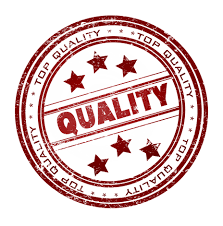
A quality-focused culture creates a healthy work environment and leads to satisfied customers.
The ability of an organisation to manage the process of continuous improvement implementation was fundamentally dependent on the culture of an organisation.
Quality culture is an environment where team members genuinely care about the quality of their work, and make decisions based on achieving that level of quality.

The culture is perpetuated by the teaching of the way we do things to new members and in continued reinforcement of the culture as the correct way to operate.
We know we have a quality culture when there is a recognition amongst all levels of an organisation that quality should be achieved for its own sake, and not just to meet regulatory approval.
Quality culture starts with leadership that understands and believes the implications of the systems view and knows the necessity of serving customers in order to succeed.
The result of that understanding is a culture where a positive internal environment and the creation of delighted customers.
Excellent service quality has been recognized as a medium of competitiveness and supremacy in terms of service.
As information are more and more available to the general public with respect to government service provision, adjoining to the increase in the educated population, this result in greater awareness of service and facility delivered which tends to the need to meet the rise in expectations of the well-informed individual.
Great service environment is a key to excellent service quality.
The concept of service environment plays an important role in understanding how to deliver excellent service quality, as it captures what employees experience in terms of organisational practices regarding service delivery. It also influences employee motivation regarding service behaviour.
If employees experience excellent service quality on the inside, they are more likely to be motivated to deliver excellent quality on the outside of the organisation. Thus, a strong service environment leads to service quality.
In order to create excellent service quality, we need to define the service parameters, build the service value chain and design the internal service platform.
Various studies have proven that an effective service delivery platform built on a solid service value chain concept greatly affects customer quality.
Training, empowerment and rewards are the three most significant factors, which determine the level of performance and, in turn, lead to delivery of service strategy and excellent service quality.

According to a Harvard Business Review (HBR) article, the employees of a top quintile company (in terms of quality) resolved 46 percent fewer mistakes than bottom-quintile companies, which resulted in approximately $350 million a year (cumulative) potential additional cost due to errors. Along with the increase in operating costs, companies also face the potential of business loss and fines by regulatory authorities.[1]
Quality failure is costly, and the time to recover can be significant.
The cost of quality failure can be categorized as internal or external.
Internal failure costs are those caused by products or services that do not fulfil requirements established prior to delivery, while external failure costs occur following the delivery of products and services to external customers, which lead to customer dissatisfaction.
Implementing quality is important to organisation as it is the best method effectively achieve its mission and objectives as well as enhancing productivity and output.
While quality assurance will reduce the impact of failures and can helping our organisation stand out amongst our competitors.
[1] https://hbr.org/2014/04/creating-a-culture-of-quality





